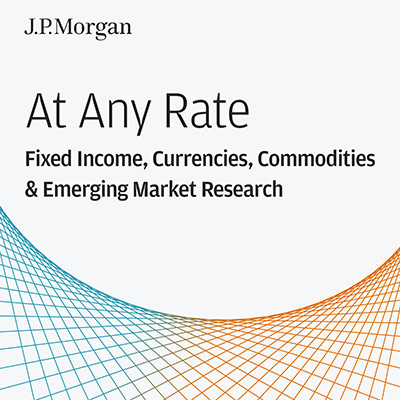
How technology is giving the beauty industry a makeover

Gone are the simple days of cleanse, tone and moisturize. The world’s largest beauty companies including Estée Lauder, L'Oréal, and Procter & Gamble are all embracing the latest emerging technologies, from artificial intelligence to augmented reality, to give customers a more personalized, tailor-made approach to beauty.
E-Commerce and beauty in china
The beauty industry, already one of the fastest growing categories in the consumer goods industry, is undergoing a digital transformation as social media and e-commerce have revolutionized the way brands can connect with their customers.
The rise of both beauty tutorials on YouTube, where influencers with millions of followers showcase complex makeup looks and an Instagram-led “selfie culture,” have helped beauty sales boom in recent years.
Nowhere is this e-commerce push more evident than in China. Historically a dominant skin care market, China is now the second largest beauty player in the world, expanding to 14% of the overall global market in 2018 from 12% in 2013.
China’s beauty market in numbers
14%
China, historically a dominant skin care market, expanded to around 14% of the global market in 2018 from 12% in 2013.
two-thirds
Two-thirds of the market is still in mass beauty sales, but luxury is growing at a faster pace.
17%-13%-6%
The top players in luxury skincare in China are L'Oréal with 17% share, followed by Estée Lauder with 13% and Shiseido with 6%.
Source: Euromonitor and J.P. Morgan
China’s growth is beauty’s key accelerator
Top five global beauty countries by 2018 sales
E-commerce has played a significant role in driving this growth, with online sales now representing a quarter of the market, as brands have been able to reach customers outside the most developed Chinese cities.
“This growth in e-commerce in China has really favored the development of luxury brands by creating a new point of distribution, well ahead of any developments seen in department stores. An increase in consumer spending from a growing middle class has also led to a pickup in demand. Young customers with real spending power, often subsidized by their parents and grandparents, set the Chinese market apart,” said Celine Pannuti, Head of European Consumer Goods Research at J.P. Morgan.
Luxury players, such as Estée Lauder, have been the major beneficiaries of this e-commerce boom in China. The prestige cosmetics company grew over 40% in China in the 12 months to June 2019, on top of the 67% growth seen in the previous 12 months.
“Younger Chinese consumers are not only more affluent, they are also using skin care much earlier than previous generations. Alibaba and other e-commerce platforms have accelerated this process, particularly for luxury cosmetics and now represent more than 30% of premium cosmetics sales in China,” said Andrea Teixeira, Head of North America Beverage, Household and Personal Care Research at J.P. Morgan.
Luxury beauty and skin care stand out
The beauty industry grew almost 6% last year, generating around $320 billion in retail sales. Beauty growth has been solid around the world, but again, it is China that is the key driver behind the outsized revenue seen in the last couple of years. Outside of China, the remaining top four beauty countries are U.S., Japan, Brazil and Germany, accounting for 36% of the global market. Even if growth were to slow from current highs, China’s beauty market is set to take over the U.S., the world’s largest beauty market in size by 2023, according to Euromonitor estimates.
The global beauty market expanded 6% in 2018
2018 global beauty sales and growth by category
Cheaper, mass market beauty product sales make up two-thirds of the total market, but it’s the premium end that is seeing the most rapid expansion—particularly in the U.S. and China—which, when including travel retail, represent about half of all global prestige market sales. Growth in luxury beauty brands outpaced the mass market for the fourth consecutive year in 2018, Euromonitor data shows, with skin care, hair care and fragrances leading the way.
Skincare is now growing faster than makeup, as the selfie generation grows up
Source: Euromonitor and J.P. Morgan estimates
“Makeup demand is moderating worldwide, particularly in developed markets, following the strong recruitment phase led by increased social media and selfie adoption from 2012 onwards,” said Teixeira.
While e-commerce has helped give smaller, indie brands a boost, the large multinationals, such as L'Oréal and Estée Lauder, are still leading in skin care. As skin care requires more research and development than other beauty products, customers tend to remain loyal to larger brands they know and trust.
“With the millennial generation getting older and make-up serving as a recruitment tool for skin care, we believe the accelerating growth trend in prestige skin care is here to stay longer-term. We see this as a great opportunity for pure prestige players like Estée Lauder,” added Teixeira.
Technology and the future of beauty
To keep customers engaged in what is a highly competitive market, brands are using new forms of emerging technology to personalize products and services. L'Oréal is helping customers looking for the perfect foundation shade to match their skin tone with artificial intelligence (AI). L'Oréal l luxury subsidiary brand, Lancome, uses a custom made machine to scan the skin to find the right color match. Customers at Lancome beauty counters can then have their foundation mixed in-store, with a proprietary algorithm choosing the right shade from thousands of variations. The French beauty giant also acquired augmented reality (AR) startup, ModiFace, developed by dermatologists. ModiFace uses AR to perform try-on simulation on photos or videos for makeup, hair and skin care. It also helps measure the precise state of skin and observe any potential skin changes in live video. The app’s technology is able to detect changes such as dark spots, discoloration, dryness, uneven skin and rosacea. It can even visualize the changes before and after the use of any beauty product, helping to recommend and ultimately sell products for customers’ specific skin care needs.
Estee Lauder is taking customization to the masses, with its Clinique-iD serum-infused moisturizers, while leading Japanese beauty brand, Shiseido, is fully moving into delivering beauty as a service. Earlier this year it launched “Optune,” a machine that eliminates the need to select skincare products at all. An app analyzes the skin and chooses the best mix of skin care cartridges for the machine, which dispenses just the right amount of product. When the cartridges are nearly empty, replacements are ordered automatically. The group also recently acquired a startup specializing in artificial skin or “Second Skin” technology. This is not yet available to customers, but the brand is developing a technology that physically corrects the condition of the skin, using a product that contains a reactive polymer layer.
“At the heart of it, the beauty industry is a business of personal advice and technology is just enabling this. So what you see from tutorials to targeted content, augmented reality, or even personalization of products—all enabled by digitalization—has really been an accelerator for the industry,” added Pannuti.
At the heart of it, the beauty industry is a business of personal advice and technology is just enabling this. So what you see from tutorials to targeted content, augmented reality, or even personalization of products—all enabled by digitalization—has really been an accelerator for the industry.
Celine Pannuti
Head of European Staples & Beverages, J.P. Morgan
Related insights
-

Global Research
Global Research
Leveraging cutting-edge technology and innovative tools to bring clients industry-leading analysis and investment advice.
-
Global Research
5G: Separating fact from hype
June 20, 2019
In multiple reports, J.P. Morgan Global Research explores the future of 5G.
-

Global Research
The streaming wars
June 03, 2019
With Disney and Apple launching services this year, J.P. Morgan examines the battle for growth and survival in video streaming.
This communication is provided for information purposes only. Please read J.P. Morgan research reports related to its contents for more information, including important disclosures. JPMorgan Chase & Co. or its affiliates and/or subsidiaries (collectively, J.P. Morgan) normally make a market and trade as principal in securities, other financial products and other asset classes that may be discussed in this communication. This communication has been prepared based upon information, including market prices, data and other information, from sources believed to be reliable, but J.P. Morgan does not warrant its completeness or accuracy except with respect to any disclosures relative to J.P. Morgan and/or its affiliates and an analyst's involvement with any company (or security, other financial product or other asset class) that may be the subject of this communication. Any opinions and estimates constitute our judgment as of the date of this material and are subject to change without notice. Past performance is not indicative of future results. This communication is not intended as an offer or solicitation for the purchase or sale of any financial instrument. J.P. Morgan Research does not provide individually tailored investment advice. Any opinions and recommendations herein do not take into account individual client circumstances, objectives, or needs and are not intended as recommendations of particular securities, financial instruments or strategies to particular clients. You must make your own independent decisions regarding any securities, financial instruments or strategies mentioned or related to the information herein. Periodic updates may be provided on companies, issuers or industries based on specific developments or announcements, market conditions or any other publicly available information. However, J.P. Morgan may be restricted from updating information contained in this communication for regulatory or other reasons. Clients should contact analysts and execute transactions through a J.P. Morgan subsidiary or affiliate in their home jurisdiction unless governing law permits otherwise. This communication may not be redistributed or retransmitted, in whole or in part, or in any form or manner, without the express written consent of J.P. Morgan. Any unauthorized use or disclosure is prohibited. Receipt and review of this information constitutes your agreement not to redistribute or retransmit the contents and information contained in this communication without first obtaining express permission from an authorized officer of J.P. Morgan.